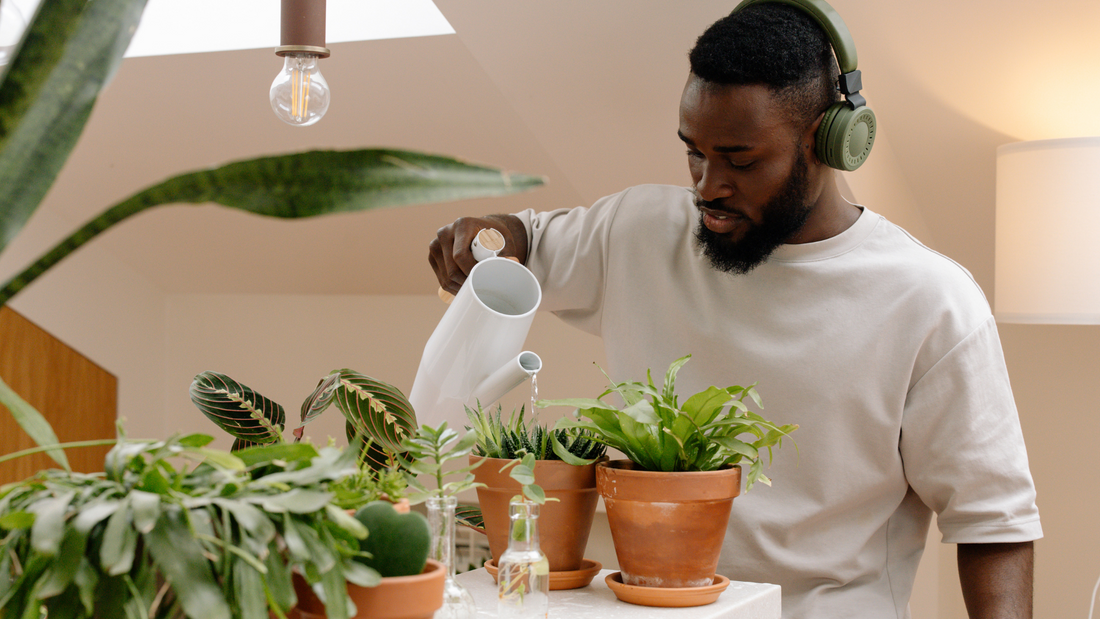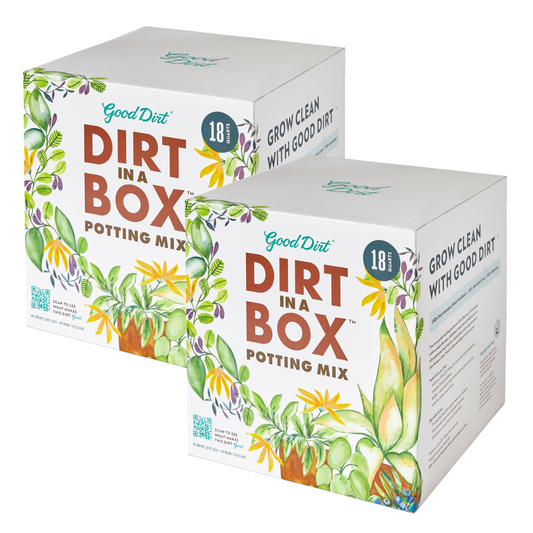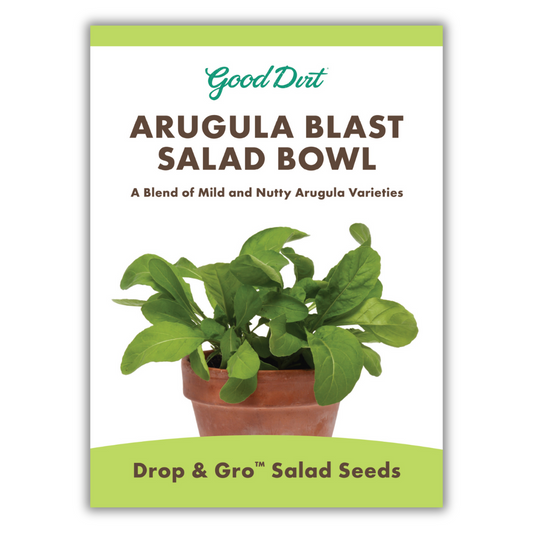What does water do for my plant?
Water is essential for all life, including the life of your plants. Just as we need our daily water intake, your plants need specific water care to help them thrive. The hydration level of a plant is key in maintaining its health and it also varies from plant to plant.Four of water’s main purposes in a plant’s life are structure, transpiration, nutrient distribution, and photosynthesis.
-
Structure
Water keeps a plant’s stem strong
A plant is full of tiny tubes called xylem. The steady movement of water molecules through the xylem ensures the sturdiness of the plant’s stem. Under-watering can result in wilting. Overwatering will cause plant stress and can be identified in various ways such as wilting, yellowing of the leaves, and can make a weak plant prone to disease and mold. -
Transpiration
Water keeps plants cool
Transpiration is a plant’s loss of water, sometimes referred to as “plant sweating.” Water evaporates through tiny holes on a plant leaf’s surface. This is how some of the water absorbed into the plant gets released back into the atmosphere. This process cools the plant and, also helps get water and nutrients to its foliage. -
Nutrient Distribution
Water and plant food travel through the whole plant
Water and plant food enter into the root system of the plant. Naturally occurring nutrients in the soil are absorbed by the roots or if utilizing Plant Food, water helps nutrients flow to the roots. -
Photosynthesis
Water helps feed your plants!
Green plants undergoes photosynthesis. This process is where the plant takes carbon dioxide from the water and water through the roots. The water finds its way to the leaves where photosynthesis occurs releasing oxygen to the air. Plants use energy from the sunlight for this process to occur. Photosynthesis is largely responsible for producing and releasing oxygen to the Earth’s atmosphere. The release of oxygen through this process is necessary for all life on Earth. Be kind to your plants!
How do I make a plant-watering schedule?
First, you should get to know everything about your plant by researching it or asking tips from a local professional. Each of your plant babes are unique and deserve individualized attention.
Then, determine how saturated or dry the plant soil is and factor in seasonal conditions. An easy rule of thumb is to put your index finger in the soil to the depth of your second knuckle to determine if the mix is dry. Or try a high-tech water meter to figure out how much and how often you need to water.
Water should be tepid when administering it to your lovely plants. If you have hard water, you may want to consider the use of distilled water or even better, collected rainwater for sensitive plants. Collecting rainwater is another way of growing sustainably!
How much is too much water for my plants?
The #1 reason houseplants die is due to overwatering. While each plant will have differing amounts of water consumption needs, common signs of overwatering are:
- Wilting, but the plant looks like it’s receiving enough water.
- Roots are starting to rot.
- Mold begins to appear on the soil.
- Yellowing and browning of leaves, turning very soft. They may, and most likely will, eventually fall. Occasionally, old leaves will turn yellow and fall and that’s normal.
- Gnats and other insects around the plant – Pests are attracted to stressed plants and overwatering is one way your plant gets stressed and develops a weaker immune system.
- Edema, or Oedema, where the plant’s cells are too filled with water that the water pressure is maxed out so much so that they burst, causing dead cells to appear as blisters atop the leaves.
Choose a potting mix that holds adequate water, yet provides optimum air space for the roots and root hairs to develop. Look no further because the Good Dirt Indoor Potting Mix was designed with indoor jungle in mind!
How can I save my overwatered plant?
The good news is, if it isn’t too overwatered, you may be able to save your plant if the roots are viable! We want to provide you with any aid we can in saving a plant you put your time, energy, and love into. A few things you can do to save your plant:
- Allowing the soil to dry.
- If soil is not drying out within a couple of days, repotting in fresh soil might be your best option.
- Removing any dead leaves with sharp sterile clippers.
- Removing any standing water in saucer.
- Double-checking drainage holes to ensure drainage is not blocked.
- Repotting, and repotting regularly. In growing mix with optimum air porosity and a pot with good drainage.
How do I know when my plants need more water?
Under-watered plants tend to exhibit the same characteristics listed above for overwatered plants. A few key specifics to look for and observe of drying plants are:
- Crisp, dry leaves.
- Thinning and curling leaves.
- Pulling away of soil from the inner edge of the pot.
- Dry soil.
- Slowing of plant growth.
How can I save my under-watered plant?
The main tip? Immediately rejuvenate your plant by watering it. Water until the soil feels moist or water runs through the drainage holes. Repeat this process until the soil has reached its proper moisture level and the plant begins to revive.
Don’t drown your plants!
Water will exit the plant through transpiration (“plant sweat”) and exit the soil through drainage holes in the pot. Although cute, pots should not have any rocks in the bottom of containers – including succulents – as it will retain the wettest soil closer to the root level causing a damming effect, potentially rotting the roots. If you love your pots without drainage, you can repot your plants in a well-draining, nutritious soil in the grower pot it came in and insert it in the cachet pot — just make sure to remove the grower pot with drainage to water to avoid accumulation in the cachet pot. Or better, drill a hole!
Plant roots need air just as much as water
Air provides “breathing” room to prevent potential rotting. Providing the right amount of light for plants is also crucial to healthy growth.
Get to know your plants
It takes truly getting to know your plants to be able to water them efficiently and correctly. We hope this guide of frequently asked questions will be a valuable resource for you to refer back to on your way to mastering the art of plant-watering! And remember, gardening is a journey of learning through successes and failures. It is this very journey that is so gratifying.





